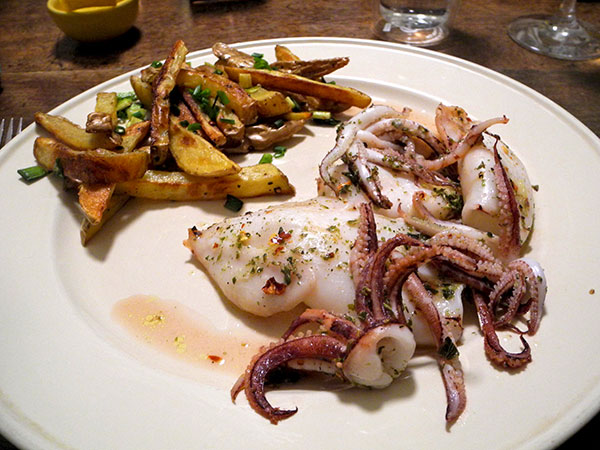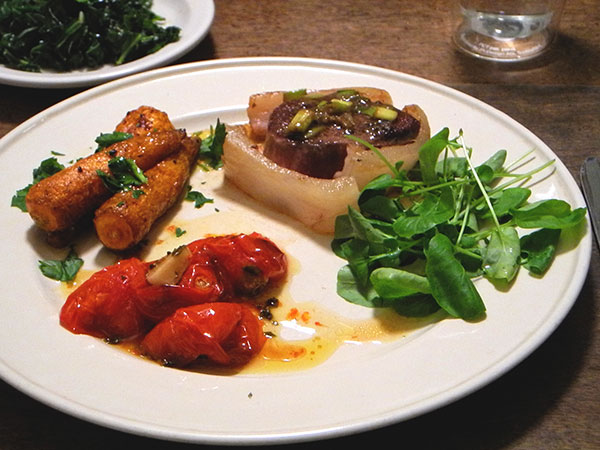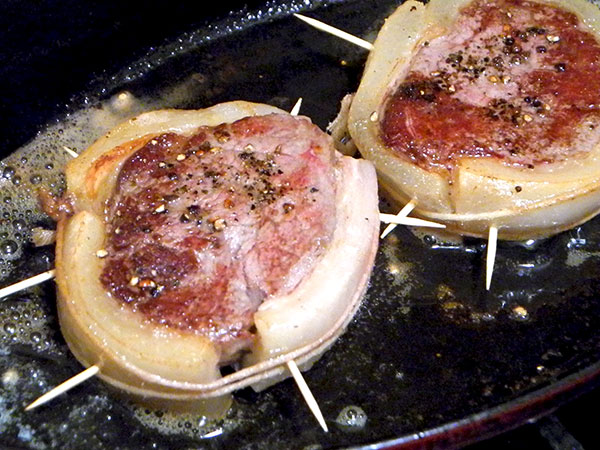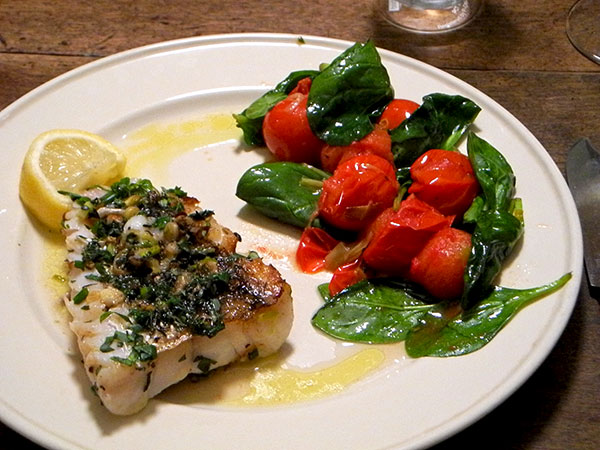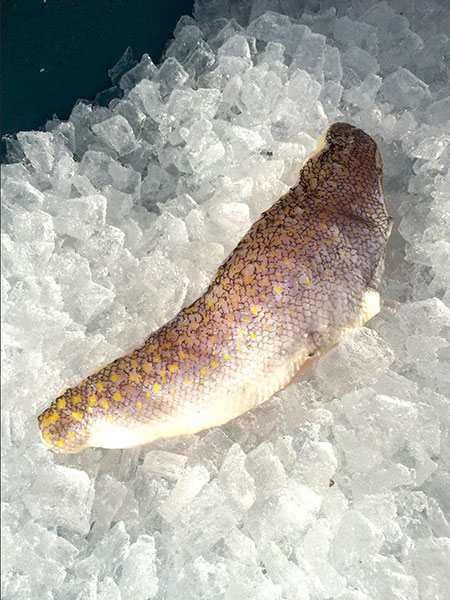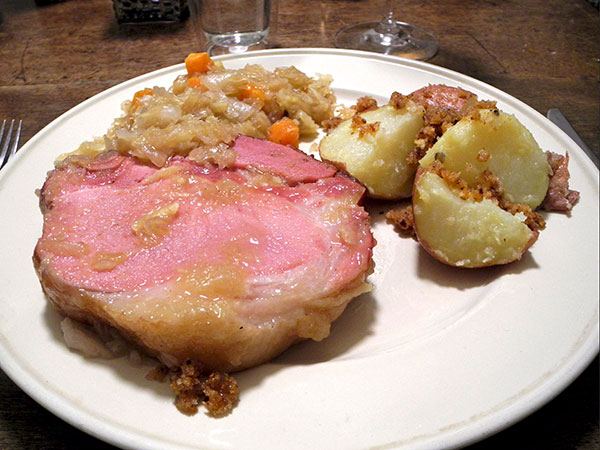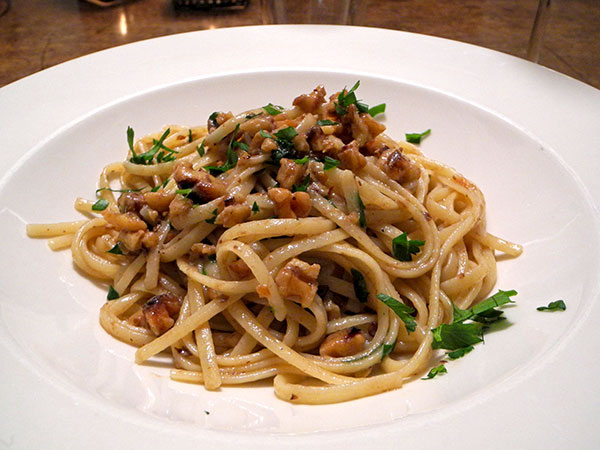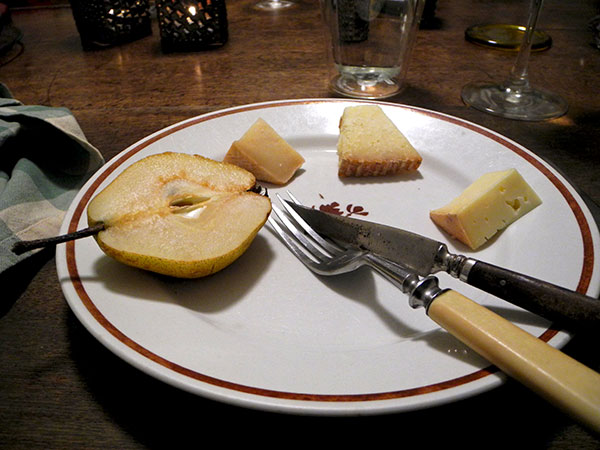I really rushed through the preparation of this meal tonight, but it turned out very well. I had originally thought I wouldn’t have time to cook after getting home from a performance which was a part of the Sixth Annual Avant Music Festival (a terrific evening of music by Paula Matthusen) but when I learned that the length of the program was to be only about 70 minutes, I went out and bought seafood at the Greenmarket today. As it turned out, the music began late (it had been sold out early, but there was some late seating, and I think everyone who showed up may have made it in), and even though one of Matthusen’s pieces had to be pulled because of a musician’s illness, we didn’t get out until pretty close to 10 o’clock. Also, on the way home, we had some sorta-bad subway karma. This meant there would be no time for any fanciness in the kitchen, or much thinking about choice of ingredients or cooking details.
What I ended up putting on the table was a simple meal, its elements very familiar to us, of spicy roasted baby squid, and a reasonable approximation of frites, which were in this case baked and finished with two different forms of allium. The squid recipe is the absolutely wonderful creation of Rose Gray and the late Ruth Rogers, from their, “Italian Easy: Recipes from the London River Cafe“. I highly recommend the recipe and the book, as well as their “The River Cafe Cook Book” and “Italian Two Easy, Simple Recipes from the London River Café”. Each of them is a jewel, and together they could serve very well as a complete kitchen library.
The cephalopods would have taken only 10 minutes from start to finish, but, after I had rinsed them I set them out to come to room temperature, they had to wait for the potatoes, which probably took all of 45 minutes.
- as a starter, far away from the kitchen, we attended the opening concert of the 2015 Avant Music Festival, four pieces by Paula Matthusen
- baby squid from Pura Vida in the Greenmarket, rinsed, dried, placed in an enameled cast iron pan after its cooking surface had been brushed with olive oil and heated on top of the range until very hot, then sprinkled with some super-pungent dried Italian oregano from Buon Italia and one crushed dried pepperoncino, also from Buon Italia, with a good squeeze of lemon juice and some olive oil drizzled over the top, placed in a pre-heated 425º oven and roasted for five minutes
- Yukon Gold potatoes from Norwich Meadows Farm, sliced as for pommes frites, unpeeled, tossed in a bowl with a bit of olive oil, salt and freshly-ground pepper, placed in one layer onto one of my trusty, well-seasoned Pampered Chef unglazed ceramic oven pans (I’m very pampered, as I have four, in three sizes) for about 30-35 minutes, a few sliced baby leeks from Rogowski Farm added and shoveled around the pan with the ‘fries’ at the very end with a wooden spatula, then served with a sprinkling of scissored chives from Whole Foods
- the wine was an Italian, white, Cantina del Taburno Falanghina del Sanno 2013
- the music was Dvořák’s Symphony No. 6
